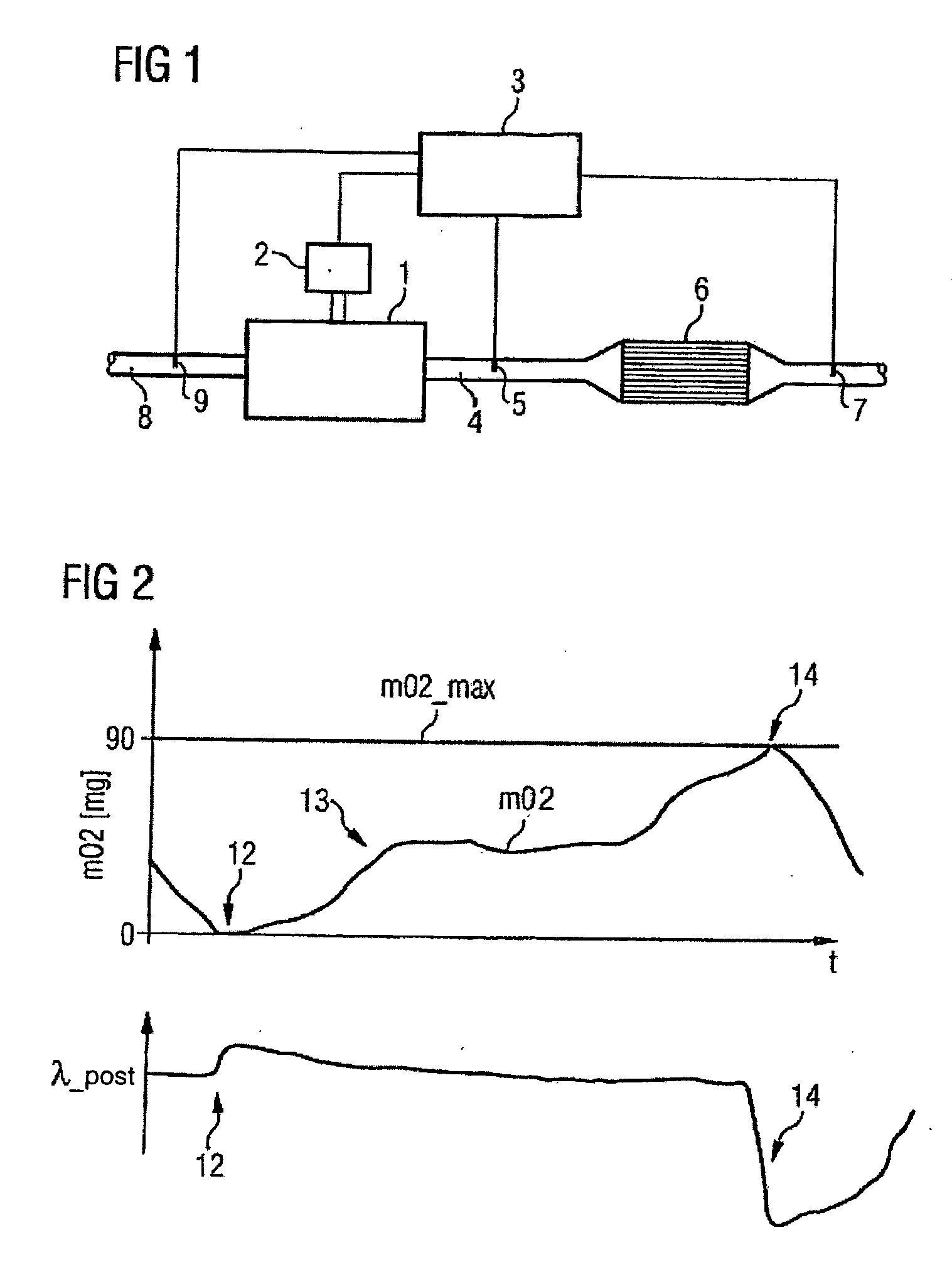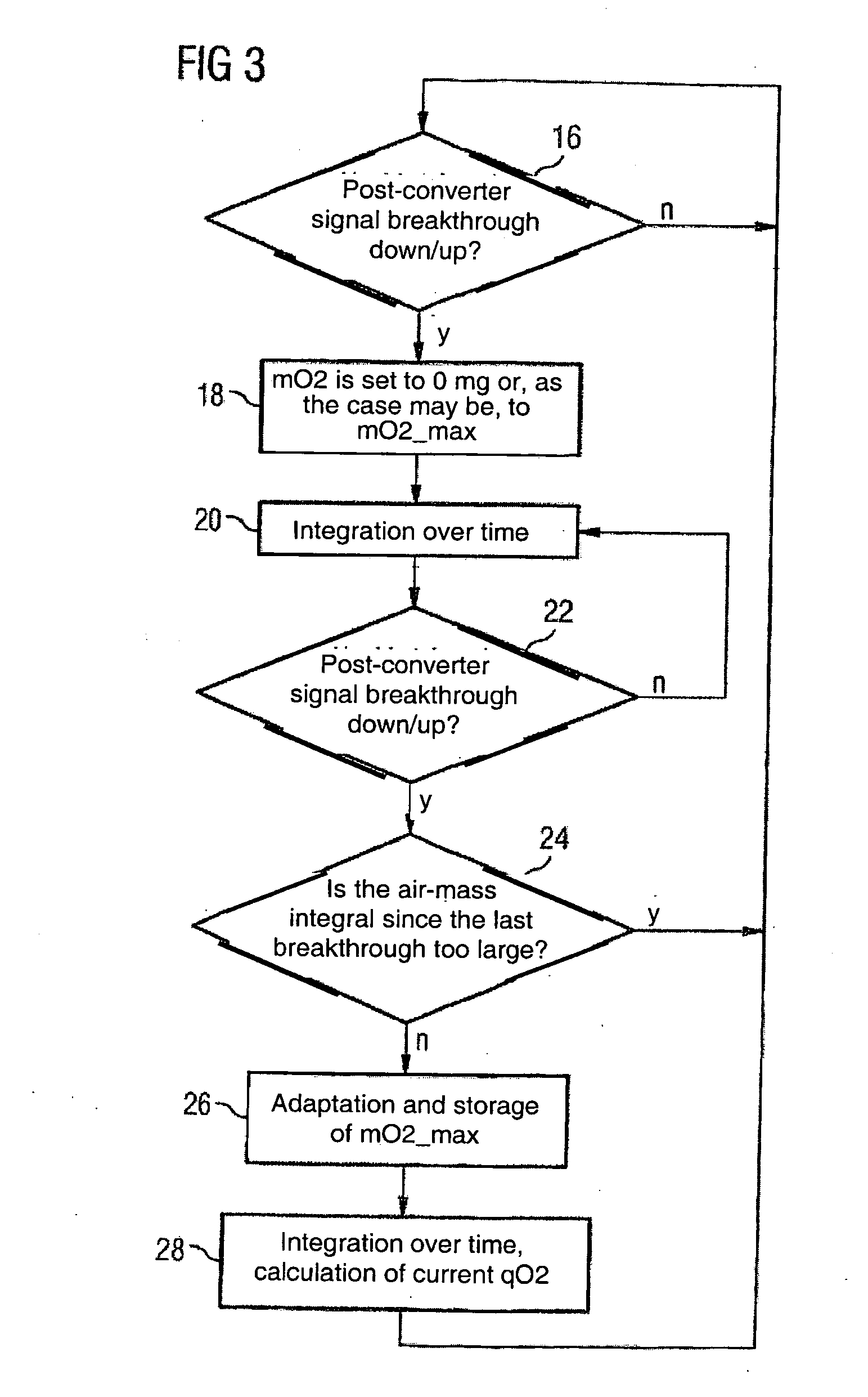Method for Determining Current Oxygen Loading of a 3-Way Catalytic Converter of a Lambda-Controlled Internal Combustion Engine
a technology of lambda-controlled internal combustion engine and catalytic converter, which is applied in the direction of electrical control, exhaust treatment electric control, instruments, etc., can solve the problems of not being able to compensate a fluctuation in the fuel/air ratio, and no information is available between said two limiting values about the actual, current oxygen loading of the catalytic converter
- Summary
- Abstract
- Description
- Claims
- Application Information
AI Technical Summary
Benefits of technology
Problems solved by technology
Method used
Image
Examples
Embodiment Construction
[0036]FIG. 1 shows an internal combustion engine 1 having a fuel-feed system [2] and a control device 3. The fuel-feed system 2 is controlled by the control device 3 via leads, which are not referenced further, and takes care of the fuel allocation needs of the internal combustion engine 1. A 3-way catalytic converter 6 is located in the exhaust tract 4 of said combustion engine 1. Provided upstream of the catalytic converter 6 is a pre-converter lambda probe 5 for performing lambda controlling and provided downstream of said converter is a post-converter lambda probe 7 for measuring the lambda value. Said pre-converter lambda probe 5 is a linear lambda probe, while what is termed a binary lambda probe is used here as the post-converter lambda probe 7 in which the output voltage in the range lambda=1 virtually jumps from, for instance, below 100 mV in the case of lean mixtures (lambda>1) to over 0.7 V in the case of rich mixtures (lambda3. In the intake tract 8 is an air-mass sensor...
PUM
 Login to View More
Login to View More Abstract
Description
Claims
Application Information
 Login to View More
Login to View More - R&D
- Intellectual Property
- Life Sciences
- Materials
- Tech Scout
- Unparalleled Data Quality
- Higher Quality Content
- 60% Fewer Hallucinations
Browse by: Latest US Patents, China's latest patents, Technical Efficacy Thesaurus, Application Domain, Technology Topic, Popular Technical Reports.
© 2025 PatSnap. All rights reserved.Legal|Privacy policy|Modern Slavery Act Transparency Statement|Sitemap|About US| Contact US: help@patsnap.com



